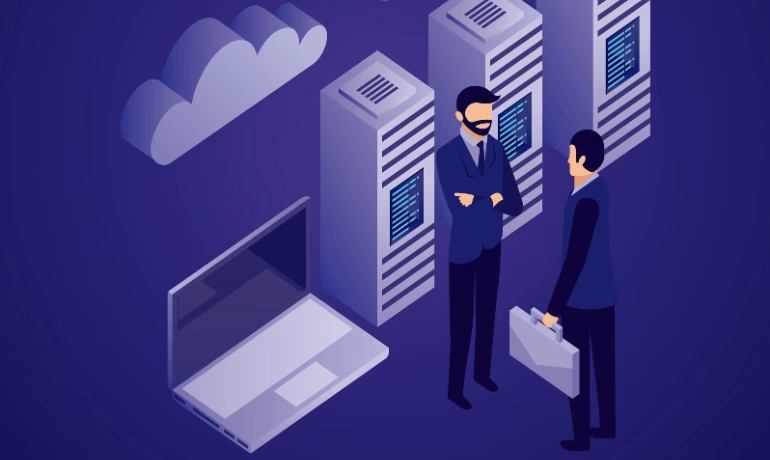Introduction
Most businesses don’t think about hosting until something goes wrong. A sudden traffic spike, a plugin update gone bad, or a painfully slow dashboard — and suddenly shared hosting feels like a rented apartment where the neighbors make all the noise.
That’s when companies start looking at VPS hosting. More speed. More control. Better security.
But one fear always holds them back:
“What if my site goes offline during the migration?”
At ChromeIS, we’ve migrated everything from small business websites to full-blown online stores — all without a single second of noticeable downtime.
The secret isn’t magic. It’s a clean, predictable process.
Below is the exact approach our engineers use.
Step One: Map What You’re Moving
Before touching anything, you need clarity.
A website isn’t just “files.” It’s:
- Databases
- Emails
- DNS settings
- Cron jobs
- SSL certificates
- Redirect rules
- Media storage
- Payment gateway callbacks
- API connections
One missing piece can break the whole chain.
A Lahore-based retailer once asked us why their emails stopped working after a DIY migration — they simply forgot to move the SMTP configuration.
This is why ChromeIS always starts with an audit.
We list every dependency, connection, and background job.
It’s boring work — but it prevents 90% of disasters.
Step Two: Build the VPS Before You Move Anything
This is where most people go wrong. They upload files first and configure later.
Wrong order.
You want your VPS to mirror your current environment before you migrate.
That means:
- Same PHP version
- Same database engine
- Same timezone, extensions, and limits
- Same directory structure
- SSL ready to activate
- Firewall configured
One Karachi client saw major PHP errors because their DIY VPS used a newer PHP build than their WordPress theme supported.
At ChromeIS, we replicate your existing setup first — so when files land, everything works instantly.
Step Three: Move Files While the Site Stays Live
Here’s the trick to zero downtime:
Transfer in the background.
We use tools like:
- rsync (continuous syncing of new/changed files)
- Staging URLs
- Incremental database migrations
Your live site keeps running on shared hosting while we quietly copy everything over.
When we migrated a busy campaign site last year, the client had over 40 GB of media. A single upload wasn’t possible — so we synced in chunks, let the site keep working, and only swapped DNS when everything was fully ready.
Visitors saw nothing. Not even a flicker.

Step Four: Test Like a User… and Like a Hacker
Once the site is fully staged on the VPS, testing begins. And not the lazy “homepage loads fine” kind.
We check:
- Every form
- Checkout flow
- Logins
- Admin dashboard
- API callbacks
- Image paths
- Email alerts
- Cache behavior
- File permissions
- SSL and mixed-content issues
Then we test like attackers:
- Permission holes
- Directory access
- Rate limits
- Bot protection
- Firewall logs
A site that “looks fine” can still be broken. We’ve caught issues like missing .htaccess rules or blocked payment gateway callbacks — things clients would never notice until customers complained.
ChromeIS solves all this before we flip DNS.
Step Five: DNS Switch — The Quiet Moment
Switching DNS is the part everyone fears, but if you’ve done the first four steps right, this is the easiest part.
A day before migration, lower your TTL to speed up global propagation.
Then point the domain to the VPS IP.
Traffic moves quietly to the new server, and because the old hosting remains active for 48 hours, anyone still hitting cached DNS gets the old site — which is still live and functioning.
This overlap is what guarantees zero downtime.
When we migrated a news site during election season, we used this exact technique. The traffic was massive, but not a single reader saw downtime.
Bonus: Post-Migration Cleanup
Once things stabilize on the VPS:
- Remove unused plugins
- Set up full-page caching
- Connect Redis or Memcached
- Optimize your database
- Offload media to object storage
- Enable server-level compression
- Schedule automated backups
This is where the serious performance boost kicks in.
Why ChromeIS Makes It Seamless
Most migrations fail not because VPS is complicated — but because businesses don’t have a roadmap.
ChromeIS handles:
- Full environment mapping
- VPS configuration
- Incremental syncing
- Staged testing
- DNS transition
- Firewall tuning
- Real monitoring during and after the move
You don’t just get a faster server — you get confidence.
Final Thoughts
Migration shouldn’t feel like surgery.
Done right, it’s more like moving houses while the family keeps living comfortably in the old one.
A VPS gives you the room, the speed, and the reliability your business needs — and the move doesn’t have to be stressful.
If you want the upgrade without the chaos, ChromeIS is your team.
We’ve done it hundreds of times — quietly, safely, and without a single minute of downtime.
Similar Post
High-Traffic WordPress Hosting on ChromeIS: The Blueprint for Speed and Stability
Introduction If you’ve ever run a WordPress site that
Cloud Cost Control Without the Headache: Lessons from Real Businesses
Introduction If you’ve ever looked at your cloud bill



